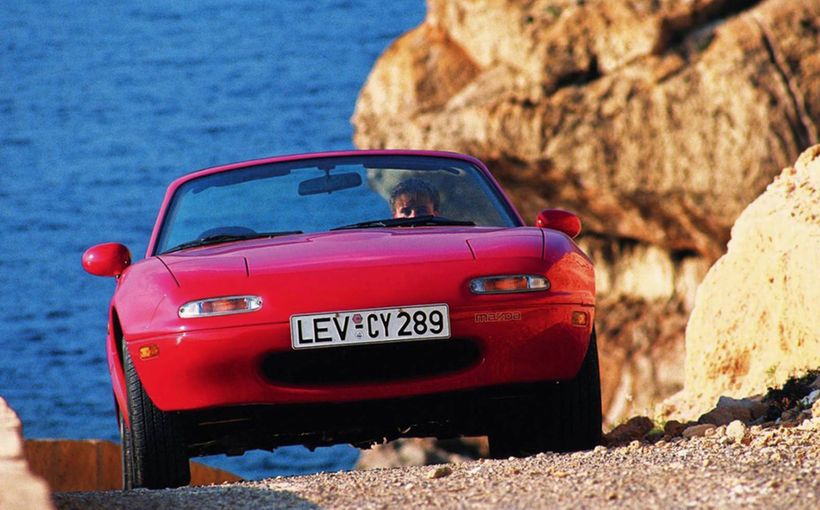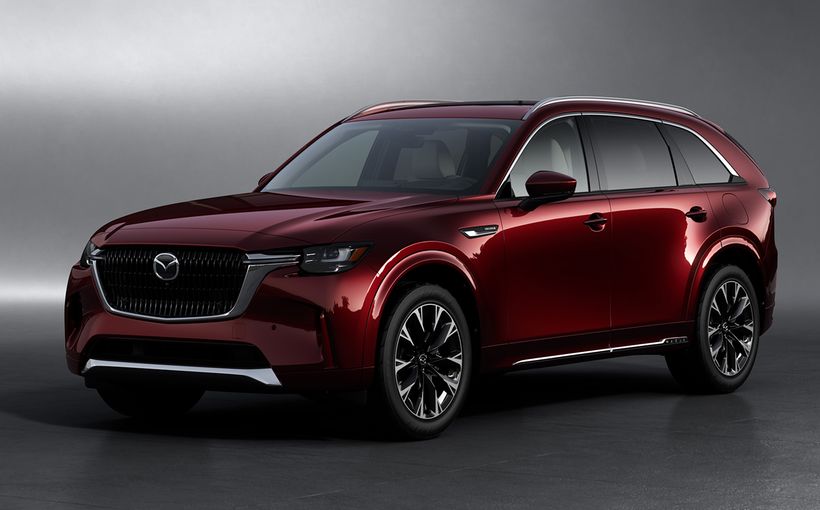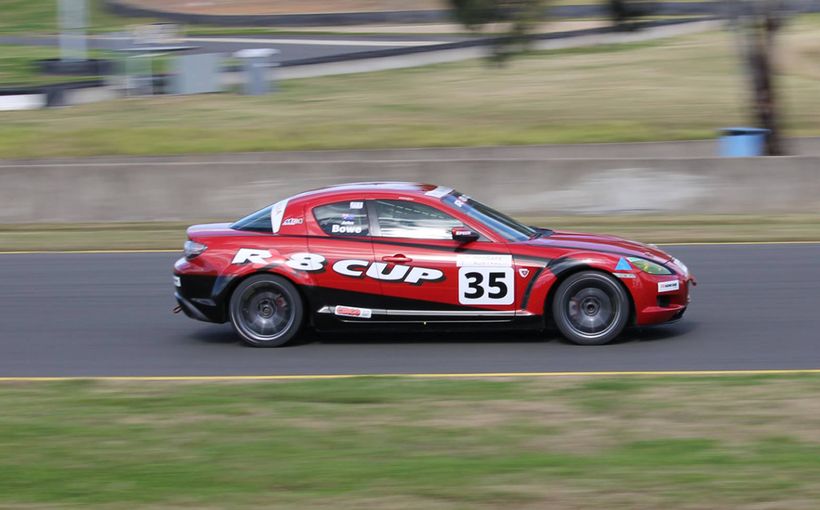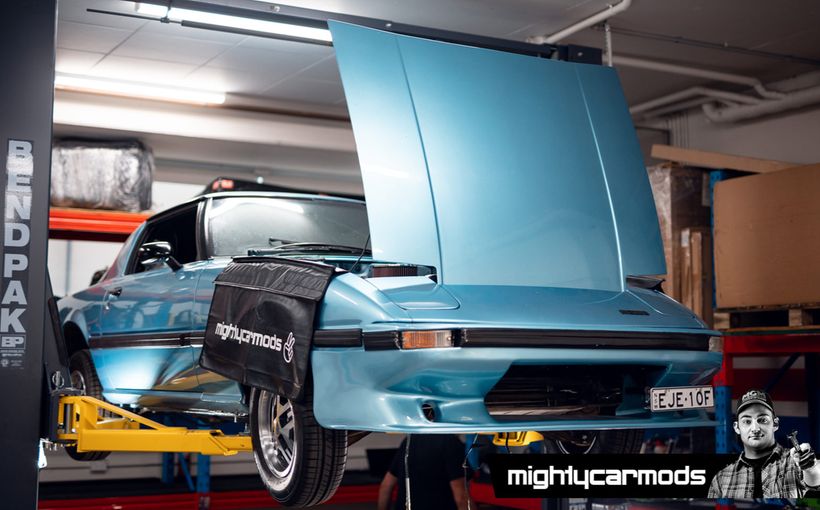Mazda 1200 and 1300: paving the road to small car leadership

The half decade from 1967 was one of the most exciting for the local motoring scene. The local manufacturers’ desire to do well in touring car racing, especially in the annual 500-mile race at Mount Panorama, saw the beginning of what retrospectively became known as the supercar era. But, arguably, competition for sales in the budget-priced sector of the market was almost as interesting.
The Toyota Corolla was genuinely exciting in 1967, rivalling the desirable quasi-sports sedan Peugeot 404 on performance (though not dynamics). But, just as the Corolla eclipsed Datsun's elegant little 1000, it, too, would be outdone the following year when the Mazda 1200 went on sale.

Toyota, Datsun and Mazda were the Japanese big three in Australia in the late 1960s. Datsun and Toyota made their marks – their marques if you like – first, but Toyo Kogyo (manufacturer of Mazdas) had been a minor presence here since the introduction of the gorgeous little Mazda 1000 coupe (almost a Japanese mini Ferrari in style) in 1966. With this model, the various Australian distributors of Mazda established their cars as somewhat upmarket of other Japanese offerings.
In January 1968 the 1000 Coupe had a list price of $2398, significantly dearer than the related sedan and wagon, both of which fetched less than $1800. A Holden HR Standard cost $2167 and even the stylish Mazda 1500 sedan (Luce in Japan) was only $2130 in entry level Special guise. Of course, this beautifully Bertone-designed sedan could also be ordered in twin-carburettor SS guise for $2620. (In some respects, the 1500 was to 1967 expectations what the Honda Accord would be to 1977’s: revolutionary, not by design but for its refinement and level of standard features compared with more expensive European offerings.)

So by the time the 1200 arrived the Mazda brand’s unique status was evident. The sedan was priced at just $1899, virtually guaranteeing strong sales in this era of the HK/HT Holden, XT/XW Falcon and first of the Hemi Valiants.
The Corolla's 1.1-litre four delivered 60 brake horsepower but they seemed to be more energetic ponies than the 62 corralled by the Datsun 1000. By contrast, the Mazda’s 1169cc engine offered 73. Its zero to 60 miles per hour time was 14.7 seconds, according to Modern Motor’s March 1969 edition, beating the Corolla (15.1) and the Datto 1000 (15.9). Even more impressive was the standing quarter-mile time of 18.9 seconds, making it just seven-tenths of a second slower than the twin overhead camshaft 1.6-litre Fiat 125 which set a new standard for its class when released here early in 1968!
The Japanese automotive industry was progressing in the proverbial leaps and bounds. Amazingly, the Mazda 1200 went harder than the wonderful little Isuzu Bellett which astonished Aussie customers back in 1963 when cars like the Hillman Super Minx, Vauxhall Victor 101 and the Ford Cortina 1200 were among the favourites in the small car category: the Bellett threatened to reach 90 miles per hour while the others would gladly have settled for 80; the Mazda 1200 managed 88!

Export markets were the key to growth for the fledgling Japanese automotive industry. Early on, product planners understood the need to offer more power for these countries, especially the US and Australia. The car which we knew from early 1969 as the Mazda 1200 had been released in Japan as the Familia 1000. Interestingly, if the Mazda 1500 had a shortfall it was in performance (and, despite the promise of eight more horsepower, at 86, Wheels found the SS to be no quicker than the Special and Super.) The 1200 accelerated harder than the 1500 and had the same top speed.
Before leaving this issue of performance (and Aussie buyers’ expectations on the subject), it’s worth noting that the little Mazda was roughly equal to a 186-engined Kingswood, unless towing came into the equation.
Fuel economy was yet to figure as the deal-breaker it would become within the decade but buyers doubtless appreciated the Mazda 1200’s readiness to seat four adults, accommodate their bags, cruise at 70 and return 38-39 miles for every gallon of fuel. (It must be said though that adults occupying the rear compartment would have needed to be of no more than average height to be tolerably comfortable.) In this sense, the 1200 was the late 1960s equivalent of the giant-killing Peugeot 203. The trusted Australian adage about the need for a six-cylinder engine had been disproven many times over: Volkswagen, Peugeot 203, Fiat 1500, etc. (Incidentally, the Datsun 1000 proved more economical than its rivals with an average of 40 mpg; just a decade earlier the tiny Mini’s 50 had seemed borderline unbelievable.)

Even in 1967 when the second generation Mazda Familia made its domestic market debut, the issue of where to locate the gearchange was still an issue when it came to the market segment immediately above the Corolla/Datsun 1000/Mazda 1200. The Fiat 1500, Peugeot 404 and Renault 16 all had column shifts, as indeed did the Mazda 1500 (although, significantly, the SS variant diverged; as if Toyo Kogyo understood that genuinely sporty cars need the shift on the floor). But all the smaller machines had four-on-the floor; it's interesting to look at these times of change – Fiat's successor to the 1500 Mark III, the 125, got the floorshift and so did the Peugeot 504.
The Japanese manufacturers were redefining the norms for small sub 1.5-litre sedans and their European counterparts had no choice but to follow. As late as 1961, the Fiat 1100, Hillman Minx, Vauxhall Victor and Simca Aronde had four-on-the-tree shifts, but by the end of the decade that configuration seemed utterly outmoded. Compare my beloved 1960 Fiat 1100 103D with the Mazda 1200? Forget it!

Unfortunately, the brakes did not receive the same attention as performance, equipment levels or finish. Drums all around prevailed and the 1200 went sufficiently hard to render its stoppers marginal. In actual braking power they were probably equal to my Fiat's but the Mazda's performance was so much better.

Toyo Kogyo had driven a long haul since 1963 when its tiny, pretty little 360cc Carol was introduced, with a handful reaching this country.
To my eyes, the 1200 always looked too narrow and upright but despite one car falling over spectacularly at Mount Panorama it seemed to handle well. Certainly road tests found little to fault, although Modern Motor considered the steering too indirect with 3.9 turns lock to lock on a tight 28 foot turning circle. How great were those days of little rear-wheel drive cars? Modern Motor said:
On gravel the tail can be made to hang out quite sportingly, but once again it's all very controllable.
Don’t you love it?

While the Corolla at the time of the Mazda 1200's local launch was available only as a two-door sedan or wagon and the Datsun 1200 in either two- or four-door sedan guise, the little Mazda came as a four-door sedan or a genuine two-door coupe (visually all but identical to the rotary-powered R100 launched locally a couple of months after the 1200).
The coupe was the subject of a road test in the April 1970 edition of Wheels, under the heading ‘That Other Mazda Coupe’, the R100 being seen as the star performer. The 1200, priced at $2150, was a natural rival for the Fiat 850S coupe ($2325) and Toyota Corolla Sprinter ($2166). Historically, the 1200 coupe is more interesting than it might otherwise have been because it was the first conventionally powered Mazda to share its body with a rotary version, making it unique for all time. About three 1200 coupes were sold for every R100.

The 1200 coupe lacked the R100’s aircraft-style dash and was fitted with 13-inch wheels rather than 14s. The tester, Rob Luck, was particularly impressed by the high level of standard equipment. Remember, this was a time when even a heater was optional equipment on a Holden Kingswood. Significantly, the limited edition White Hot Holden, showcasing the new 253 cubic-inch V8, had been tested the previous month. Rob Luck wrote that story, too.
Looking back all these decades the extra equipment fitted to the White Hot Holden looks laughable – chiefly, power disc brakes and Monaro wheeltrims. Transmission was still three on the column with non-synchro first: so, basic, even for 1970. By contrast, the Mazda 1200 coupe’s long list of standard fare was a revelation. A pushbutton radio, laminated windscreen, reclining front bucket seats, through-flow ventilation (very effective, said Luck), full heater-demister system, even spare fuses.

The fully imported 1200 was superseded by the 1300 in 1971 with a controversial facelift. While the 1200’s grille was neat and easy on the eye, the new car got an extravagantly chromed arrangement that looked a little like a caricature of a 1954 Buick’s. Power was up to 78 brake horsepower and Mazda was still the performance king of its category. In 1972 the Mazda 808 arrived (along with its same-body sibling RX-3, bridging the gap between the 1300 and the Capella. This small car pair paved the way for Mazda’s strong presence in the sector which it would eventually in some months at least – dominate. Of course, the days of 1.2-litre engines and rear-wheel drive have long gone, but that 1969 Mazda 1200 constituted a pretty impressive template.











